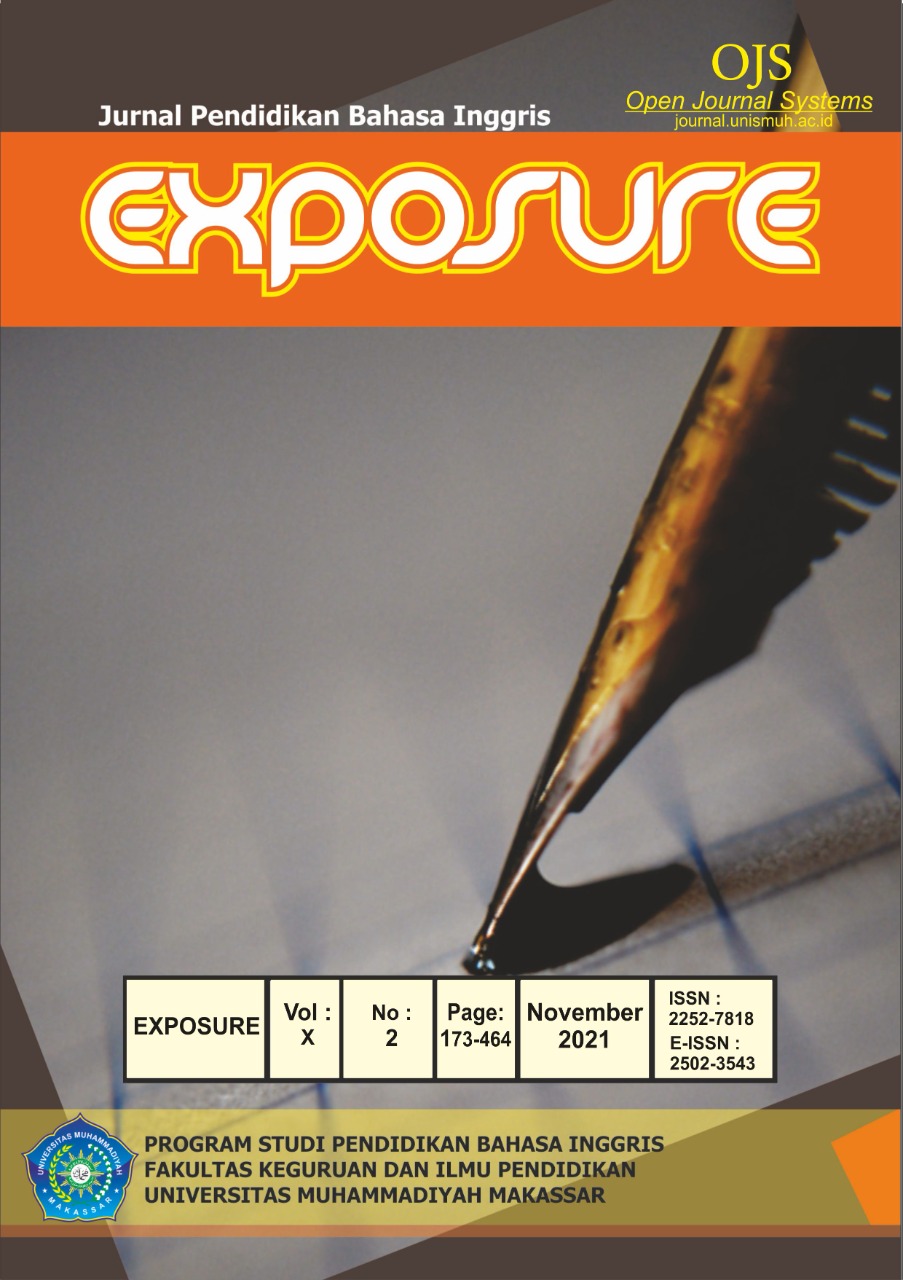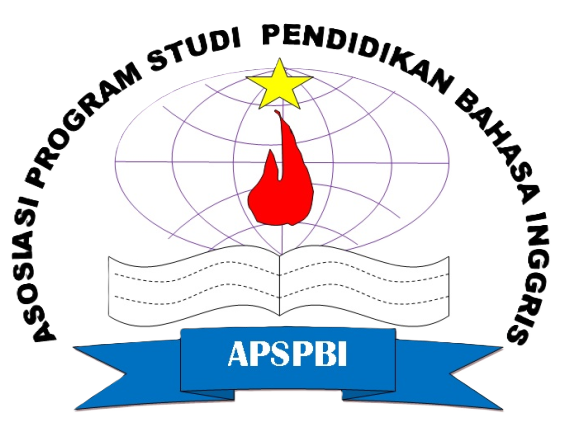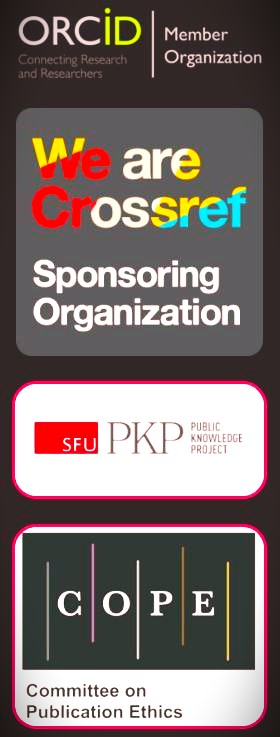ENGLISH TEACHERS’ PERCEPTION ON USING DIGITAL TOOLS IN THE CLASSROOM
DOI: https://doi.org/10.26618/exposure.v10i2.5769
Teachers’ Perception, Digital Tools, English Classroom
Abstract
In the digital era, the application of technology for classroom learning is urgently needed. Teachers are greatly helped by the availability of various digital tools because it can be used to support the students’ learning process. Teacher’s behavior and trust are important factors in determining the role and effectiveness of technology use in the classroom. However, with all the advantages and conveniences offered by digital tools, there are still challenges that must be faced by the teachers. This study aims to find out the perception of English teachers towards the use of digital tools in teaching English. The participants were English Education students at Universitas Terbuka who enrolled the Teaching English as Foreign Language (TEFL) courses. The method used in this research is qualitative and the data is collected by using questionnaire. This research is expected to provide recommendations on the development of teaching methods and teaching materials related to the digital tools.References
Cheng, S. (2018). Teachers’ perception on the use of digital tools in English teaching and learning. Faculty of Education and Society: Malmo University.
Dahlkwist, M. (2012). Lärarens ledarskap- relationer och grupprocesser. Liber AB.
Denscombe, M. (2011). The Good Research Guide. Buckingham: Open University Press.
Department of Health and Social Care. (2019). DHSC annual report and accounts: 2018 to 2019.
Digital tools: ITILT (Interactive Teaching in Languages with Technology) mini-guide.(2017).Retrieved from http://www.itilt2.eu/pages/docs/Guides/2_Tools.pdf
Firmansyah. (2021). The Effectiveness of Using the Zoom Application as an Online Learning Media during the Covid-19 Pandemic for STAI Al-Amin Dompu Students. Al-Furqon Jurnal Studi Pendidikan Islam, 9(2), 11-18.
Ghavifekr, S., Kunjappan, T., Ramasamy, L., Anthony, A. (2015). Teaching and Learning with ICT Tools: Issues and Challenges from Teachers’ Perception. Malaysian Online Journal of Educational Technology, 4(2), 38-57.
Johnson, A.M., Jacovina, M.E., Russell, D.G., and Soto, C.M. (2016). Challenges and solutions when using technologies in the classroom.
Kurnia, N. and S. I. Astuti. (2017). Map of the digital literacy movement in Indonesia: Studies on actors, various activities, target groups and partners conducted by Japelidi (In Bahasa)," Informasi, vol. 47, no. 2, p. 149-166.
Mahiri, J. (2011). Digital Tools in Urban Schools: Mediating a Remix of Learning. University of Michigan Press.
Ovcahruk, O, Iryna, I., Natallia, S., Olena, G., Oksana, K. (2020). The use of digital learning tools in the teachers’ professional activities to ensure sustainable development and democratization of education in European countries. E3S Web of Conferences 166, 10019. ICSF.
UNICEF Indonesia. 2021. Final Report: Situational Analysis on Digital Learning Landscape in Indonesia.
Downloads
Published
How to Cite
Issue
Section
License
Authors who publish with this journal agree to the following terms:
In order to assure the highest standards for published articles, a peer review policy is applied. In pursue of the compliance with academic standards, all parties involved in the publishing process (the authors, the editors and the editorial board and the reviewers) agree to meet the responsibilities stated below in accordance to the Journal publication ethics and malpractice statement.
Duties of Authors:
- The author(s) warrant that the submitted article is an original work, which has not been previously published, and that they have obtained an agreement from any co-author(s) prior to the manuscript’s submission;
- The author(s) should not submit articles describing essentially the same research to more than one journal;
- The authors(s) make certain that the manuscript meets the terms of the Manuscript Submission Guideline regarding appropriate academic citation and that no copyright infringement occurs;
- The authors(s) should inform the editors about any conflict of interests and report any errors they subsequently, discover in their manuscript.
Duties of Editors and the Editorial Board:
- The editors, together with the editorial board, are responsible for deciding upon the publication or rejection of the submitted manuscripts based only on their originality, significance, and relevance to the domains of the journal;
- The editors evaluate the manuscripts compliance with academic criteria, the domains of the journal and the guidelines;
- The editors must at all times respect the confidentiality of any information pertaining to the submitted manuscripts;
- The editors assign the review of each manuscript to two reviewers chosen according to their domains of expertise. The editors must take into account any conflict of interest reported by the authors and the reviewers.
- The editors must ensure that the comments and recommendations of the reviewers are sent to the author(s) in due time and that the manuscripts are returned to the editors, who take the final decision to publish them or not.
Authors are permitted and encouraged to post online a pre-publication manuscript (but not the Publisher’s final formatted PDF version of the Work) in institutional repositories or on their Websites prior to and during the submission process, as it can lead to productive exchanges, as well as earlier and greater citation of published work (see The Effect of Open Access). Any such posting made before acceptance and publication of the Work shall be updated upon publication to include a reference to the Publisher-assigned DOI (Digital Object Identifier) and a link to the online abstract for the final published Work in the Journal.














